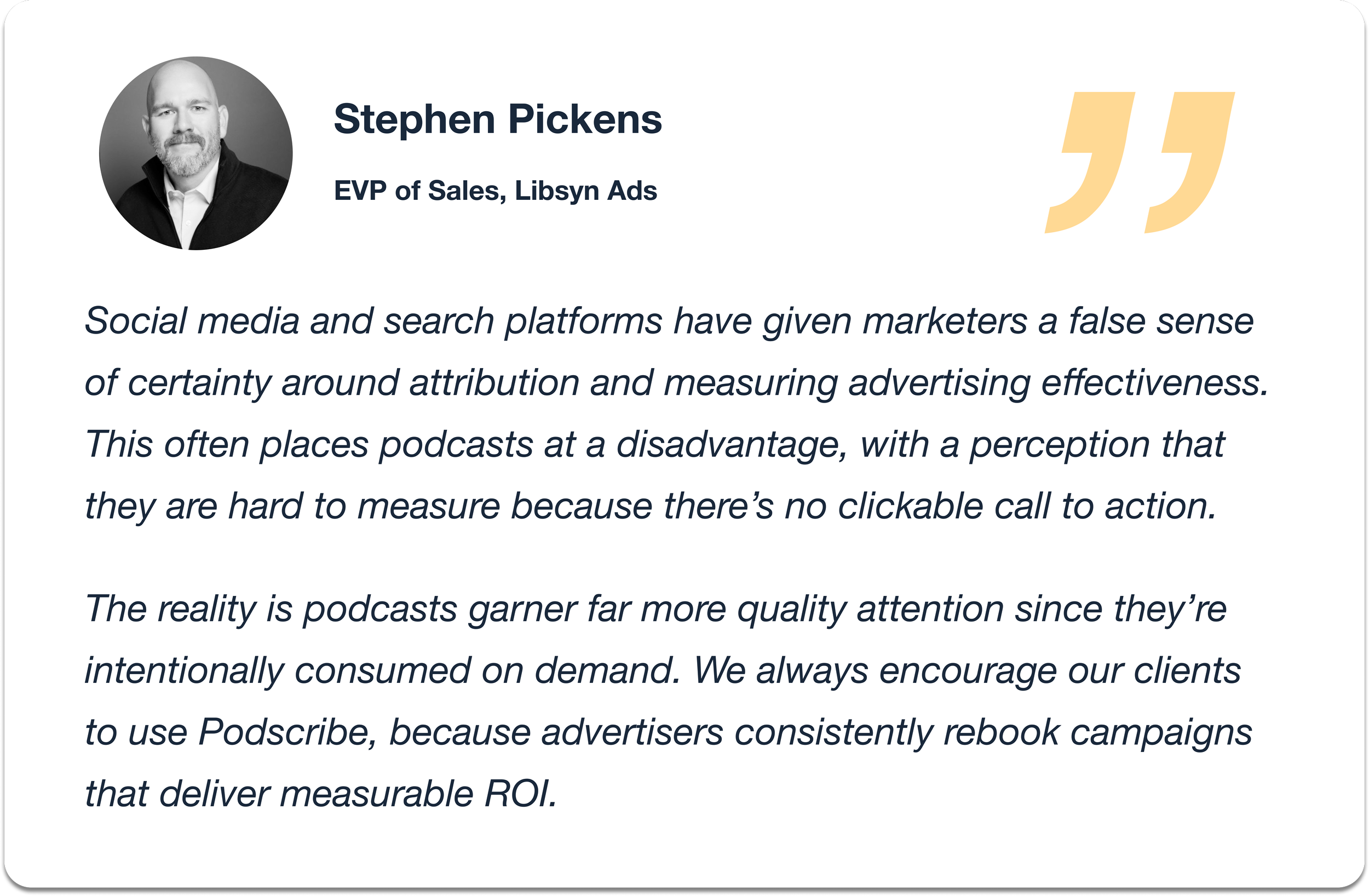The Resilience of Podcast Measurement in the Privacy Era
By Podscribe x Libsyn
The digital advertising world is always evolving. With Apple’s latest iOS privacy updates as well as an increasingly complex web of global and regional privacy regulations, marketers everywhere are bracing for disruption. Channels that built their foundations on click IDs and URL parameters need to adapt.
For most channels, it may feel like panic. For podcasting, it’s business as usual.
The Slow Decline of Click-Based Measurement
Across the digital landscape, marketers are grappling with the same issue: the foundations of measurement are crumbling.
Cookies are being phased out or are already restricted. While other browsers like Safari and Firefox block or restrict third-party cookies by default, privacy-first browsers like Brave go further by blocking trackers altogether.
URL-based attribution is eroding. With Apple’s iOS26, tracking parameters like utm_source and gclid are being stripped from Safari’s Private Browsing, Mail, and Messages. These were the major source of campaign analytics in Google Analytics, email marketing, and multi-touch attribution. Without them, performance data is fuzzier.
Apple’s Mobile Ad IDs are limited. With the introduction of App Tracking Transparency, the proliferation of the ID for Advertisers (ie “IDFA”) is now in the hands of the users. According to Adjust, only 30% of prompts result in an opt-in in the US.
Fingerprinting is blocked. Browser (Safari) protections now prevent the collection of device-level signals, shutting down technical workarounds.
Regulations are escalating. From GDPR in Europe to CPRA in California, compliance standards continue to evolve.
Advertisers who built their playbooks around probabilistic models, clicks, and IDFAs face a large measurement blind spot.
Podcast Attribution is Largely Unimpacted
From the beginning, pixel-based podcast attribution methods required the use of limited data compared to other digital platforms, making it harder to measure. What was once considered a limitation is now a strength, as most of the changes to data distribution on the internet have not impacted methodologies.
Podcast attribution is also unique in that it must integrate with an open RSS infrastructure as well as traditional advertising technology:
Podcast RSS Prefixes help facilitate the measurement of baked-in host read ads
Pixels capture impressions from dynamically inserted ads from podcast ad servers
Aligning results with surveys, promo codes, and vanity URLs provide direct listener-reported feedback and serve as additional data points
Independent verification of ad placement and delivery, ensuring transparency
This makes podcast measurement uniquely resilient in the large privacy shift we are observing in the digital marketing ecosystem.
At the IAB Podcast Upfront 2025, Cam Weber, Senior Director of Partnerships at Podscribe, explained why podcasting’s open ecosystem gives it a real edge. Watch the clip →
The Future Playbook for Marketers
The future belongs to marketers who can build real brands, foster direct relationships, and embrace smarter, blended measurement strategies.
That’s exactly where podcasting shines. It’s a channel that thrives without invasive tracking and provides measurement methods already aligned with the direction that the digital industry is going from a privacy perspective. .
Podcasts aren’t just storytelling powerhouses. They’re performance drivers for marketers, built to weather privacy shifts that are breaking other parts of digital advertising.
Because in a world that’s moving beyond the click, podcasts continue to deliver.
Request a demo to see how podcast attribution, incrementality, and verification can future-proof your campaigns.
About Libsyn Ads
Libsyn Ads is a leading podcast advertising platform with a 20 year legacy that connects brands with highly engaged listeners. By simplifying campaign management and optimizing results for both advertisers and publishers, Libsyn Ads helps marketers reach high-intent audiences while empowering creators to monetize their content effectively.



